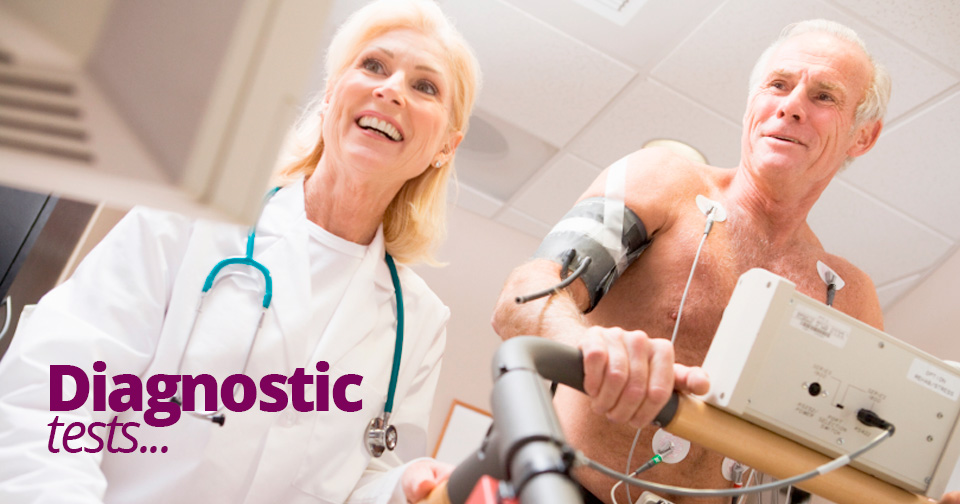Medical Areas
Cardiology: This area deals with all disorders affecting the heart and the circulatory system: myorcardiopathy, heart disease such as myocardial infarction and angina, valvular heart disease, heart failure, indication of angioplasty with stent, coronary bypass surgery, valve replacement surgery, heart transplant arrhythmias, heart block, implantation and monitoring of pacemakers and defibrillators. Studies on: thoracic pain, heart murmurs, dyspnea or shortness of breath, fatigue, palpitation, syncope or loss of consciousness as a result of heart problems, peripheral artery disease: aorta, carotid arteries and lower limbs.
Cardiovascular Risk: This area studies and establishes the right treatment for the determining factors that increase the risk of cardiovascular events such as stroke, myocardial infarction, various cardiopathies, kidney disease and peripheral artery disease. The most important are: arterial hypertension, alteration of lipids such as cholesterol or high levels of triglycerdies, diabetes, family history of cardiopathy, smoking, obesity and sedentary behaviours.
Sports Cardiology: This area deals with the detection of heart disease that predispose the athlete to suffer a sudden death or cardiovascular disease. This speciality also studies the adaptation of the cardiopulmonary system to different levels of exercise, being able to examine the heart at ,axo,i, straom, thus ensuring a safe sporting activity.
Consultations
- · First visit and follow-up in Cardiology
- · First visit and follow-up in Cardiovascular Risk
- · Second opinion in Cardiology or Cardiovascular Risk
- · Complete cardiovascular check-up with additional tests
- · Preoperative consultation to evaluate risks of sugery
- · Programming and Monitoring of pacemakers and defibrillators (ICD)
- · Consultation and monitoring of anticoagulants (Coumadin®, Aldocumar®, Sintrom®)
- · Complete check-up for competitive or professional athletes
- · Medical aptitude certificate for amateur athletes
Diagnostic tests
· Electrocardiogram
· Spirometry
· Echocardiogram
· Colour Doppler Echocardiogram+ info
An echocardiogram is a basic diagnostic method used in cardiology to observe the heart in motion (beating) in real time. The Doppler and colour Doppler ultrasound methods are applied to these images to analyse the blood flow through the heart. This study provides information on the structures of the heart and the way they work. It can determine the size (diameter, areas and volumes) and calculate weight in grams as well as the force of contraction and the volume each heartbeat pumps. Finally it measures the speed and the pressure of blood flowing through each of the valves.
· Exercise test (Ergometrics and Treadmill)+ info
Ergometrics or exercise test is a fundamental diagnostic technique used mainly to diagnose angina in patients with chest pain and to evaluate how the heart responds to exercise.
It is used in coronary diseases to detect cardiovascular alterations that are not present while the patient is at rest but may occur during physical exercise.
If there is a coronary obstruction, it will result in a lack of blood supply and the onset of angina and/or alterations in the electrocardiogram. In addition to improving the precision of a diagnosis, ergometrics is also useful for estimating the prognosis and capacity for physical exercise and evaluating the effect of treatment on patients already diagnosed with coronary disease. It is also used to ensure the absence of arrhythmias and coronary disorders in athletes under conditions of extreme stress and to determine the anaerobic threshold so as to plan training accordingly.
· 24h Holter ECG Monitoring+ info
This study continuously records electrocardiographic signals on various simultaneous channels to better visualise events. Some cardiac problems may not be detected at the time of consultation; however, thanks to this study with continuous 24 hour electrocardiographic monitoring and subsequent processing with a special programme, arrhythmias, cardiac blocks and myocardial ischemia can be diagnosed and studied.
· Holter ECG Event Recorder+ info
This is a small, portable and wireless electrocardiogram device that is easy to use. It is recommended for sporadic events for which the patient can record the electrocardiographic tracing from home. Later, a doctor uses a special computer to analyse the problem the patient experienced on that day.
· Holter Monitoring of Arterial Pressure+ info
This study continuously records arterial pressure and observes its activities for 24 hours in the patient’s normal environment and routine. It provides important information for the diagnosis of arterial hypertension and is a very useful tool for determining the best treatment and most suitable schedule for taking antihypertensives.
· Stress Echocardiogram+ info
A stress echocardiogram is a diagnostic procedure indicated for when doctors wish to assess cardiac muscle during exercise. It is used in patients who cannot perform a conventional stress test or to improve the diagnostic performance of such.
· Tilt test+ info
A tilt test is a non-invasive method of study that assesses the changes produced in arterial pressure and cardiac frequency when the patient, strapped into a special bed, is tilted to a standing position for a prolonged period of time. It is indicated for studying patients with a sudden loss of consciousness (syncope), dizziness or impending fainting, without fainting actually occurring, and in the study of other alterations to the autonomous nervous system such as orthostatic arterial hypertension.
· Programming and Monitoring Pacemakers and Defibrillators (ICD)+ info
Pacemakers and defibrillators (ICD) are programmed, adjusted and monitored with advanced equipment specially designed for the speciality. It monitors operation, battery status and electrodes (cables) and individually optimises programming of these devices for each patient.
· Programmed Electrical Cardioversion for Arrhythmias+ info
This procedure is applied to patients with determined alterations in heart rhythm (arrhythmia) to recover a normal rhythm. In electrical cardioversion, one or various electric charges (“electric shocks”) are applied through two paddles placed on the chest on either side of the heart. This procedure is called external electrical cardioversion. Since the electric shocks are painful, cardioversion is done under a short, deep sedation period or general anaesthetic thus exposing the patient to a non-traumatic experience. Patients can normally return home a few hours after cardioversion once they have recovered from the anaesthetic and sedatives. Complications and risks: Irritation or sometimes a small burn may occur in the area where the paddles were placed on the skin. Other than that, electrical cardioversion is well tolerated in the majority of cases with an overall rate of complications lower than 5%.
· Vascular Colour Doppler Ultrasound+ info
Vascular colour Doppler ultrasound is an advanced, non-invasive echographic technique that provides information on the vascular structure. It measures blood flow in different areas of the body’s circulatory system and determines the presence of atheromatous plaques and flow obstructions in arteries and veins. It studies the arteries that supply the brain, arteries in the neck, the aorta, renal arteries and the arteries in the lower and upper limbs.





